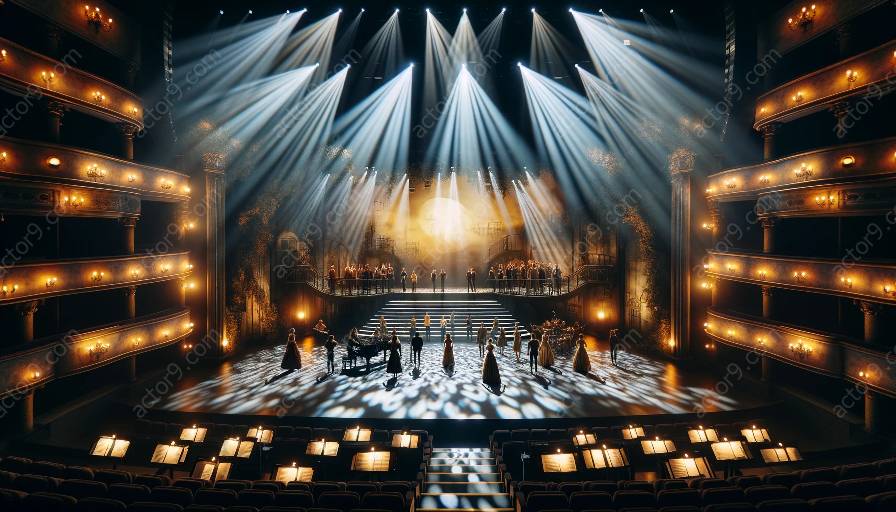Lighting design plays a critical role in enhancing the choreography and movement on stage in musical theatre, creating an immersive and impactful experience for the audience. The relationship between lighting and performance in musical theatre is multifaceted, encompassing a range of technical, artistic, and emotional elements.
Understanding the Role of Lighting Design
Lighting design in musical theatre goes beyond simply illuminating the stage; it serves as a dynamic tool to complement and enhance the storytelling, emotional dynamics, and visual composition of the performance. Choreography and movement are greatly influenced by the use of lighting, as it can highlight specific actions, create mood and atmosphere, and direct the audience's focus.
Accommodating Choreography and Movement
Lighting designers work closely with choreographers and directors to understand the movement and spatial dynamics of the performance. By strategically placing light sources, adjusting intensity and color, and using lighting effects, designers can accentuate the dancers' movements, create visual depth, and define the stage space. The coordination between lighting and choreography is essential in ensuring that the performers are properly showcased and that the audience can fully engage with the dance sequences.
Emphasizing Emotional and Narrative Elements
Lighting design also contributes to the emotional and narrative elements of musical theatre. Changes in lighting intensity, color, and texture can evoke specific moods and reflect the emotional journey of the characters. In dance numbers, lighting effects can mirror the rhythm and dynamics of the music, amplifying the impact of the choreography and enhancing the overall performance.
Creating Atmosphere and Visual Composition
Lighting serves as a powerful tool for creating atmosphere and visual composition on stage. By incorporating patterns, movement, and spatial configurations, lighting designers can transform the stage environment, transporting the audience to different settings and time periods. This visual enhancement contributes to the overall storytelling and creates a fully immersive experience.
Coordinating Technical and Artistic Aspects
The collaboration between lighting designers, choreographers, and technical teams is essential for seamlessly integrating the technical and artistic aspects of the production. This coordination ensures that the lighting design not only accommodates the choreography and movement but also aligns with set design, costume choices, and overall production concept, resulting in a cohesive and impactful visual presentation.
Conclusion
The impact of lighting design on choreography and movement in musical theatre is profound, shaping the visual, emotional, and narrative dimensions of the performance. Through strategic planning, creative collaboration, and technical innovation, lighting designers play a pivotal role in creating an immersive and unforgettable theatrical experience for audiences worldwide.




































